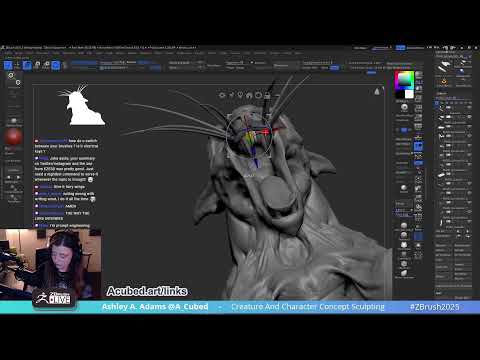Your Cart is Empty
Customer Testimonials
-
"Great customer service. The folks at Novedge were super helpful in navigating a somewhat complicated order including software upgrades and serial numbers in various stages of inactivity. They were friendly and helpful throughout the process.."
Ruben Ruckmark
"Quick & very helpful. We have been using Novedge for years and are very happy with their quick service when we need to make a purchase and excellent support resolving any issues."
Will Woodson
"Scott is the best. He reminds me about subscriptions dates, guides me in the correct direction for updates. He always responds promptly to me. He is literally the reason I continue to work with Novedge and will do so in the future."
Edward Mchugh
"Calvin Lok is “the man”. After my purchase of Sketchup 2021, he called me and provided step-by-step instructions to ease me through difficulties I was having with the setup of my new software."
Mike Borzage
Mastering Advanced Parametric Modeling in Modern CAD Systems
March 21, 2025 14 min read


Understanding Advanced Parametric Modeling in Modern CAD
Parametric modeling has fundamentally transformed the landscape of computer-aided design (CAD), introducing a paradigm where designs are defined by parameters and constraints rather than fixed dimensions. At its core, parametric modeling allows designers and engineers to create models that are inherently flexible and adaptable. By assigning variables to key dimensions and establishing relationships between different elements of a design, changes can be made quickly and propagated throughout the model automatically. This contrasts sharply with non-parametric, or direct modeling, where each modification must be made manually, often leading to time-consuming revisions and a higher potential for errors. The ability to define complex geometric relationships through parameters not only accelerates the design process but also enhances accuracy and consistency across various design iterations. Understanding the fundamentals of parametric modeling is essential for leveraging the full capabilities of modern CAD systems and pushing the boundaries of innovative design.
Definition and Fundamentals
Parametric modeling in CAD refers to the method of designing models using parameters that define and control the attributes and behavior of geometric entities. These parameters can be dimensions, constraints, or equations that establish relationships between different parts of the model. The fundamental principle is that by changing the value of a parameter, the model automatically updates to reflect that change, ensuring that all related features adjust accordingly. This approach enables designers to explore multiple design scenarios swiftly without reconstructing the model from scratch. The distinction between parametric and non-parametric (direct) modeling lies in this inherent flexibility. While direct modeling allows for intuitive manipulation of geometry without predefined constraints, it lacks the ability to propagate changes systematically throughout the model. In parametric modeling, the establishment of constraints and dependencies is crucial. Constraints can be geometric, such as parallelism, tangency, or concentricity, and they ensure that the design intent is preserved regardless of dimensional changes. Dependencies define how one feature relates to another, ensuring coordinated updates. By integrating mathematics and logic into the design process, parametric modeling offers a robust framework for creating complex and adaptable models that meet precise specifications.
Evolution of Parametric Techniques
The journey of parametric modeling in CAD has been marked by significant advancements that have reshaped design and engineering practices. In the early days of CAD, models were primarily static representations, lacking the dynamic adaptability required for iterative design. The introduction of parametric techniques in the late 20th century brought a revolutionary shift. Key milestones include the development of feature-based modeling, where geometric features are defined parametrically, and the integration of constraint-based systems that formalize relationships between model elements. Software innovations in the 1990s, such as Pro/ENGINEER, pioneered the use of parametric and associative modeling in commercial CAD applications. This period saw rapid advancements in computational capabilities, enabling more complex calculations and real-time updates of parametric models. The evolution continued with the incorporation of scripting and automation tools, allowing for even more sophisticated models and design processes. Today, advanced parametric modeling techniques are integral to modern CAD systems, offering unparalleled levels of control and efficiency. They enable designers to create highly complex models with intricate dependencies, facilitate rapid prototyping, and support the development of customized products. The historical progression of these techniques reflects the increasing demands of industry for more agile and intelligent design tools that can handle the complexities of modern engineering challenges.
Importance in Contemporary Design
In the fast-paced world of contemporary design and engineering, parametric modeling has become indispensable. The benefits it offers extend beyond mere efficiency gains; it fundamentally enhances the way designers and engineers approach problem-solving. By utilizing parametric modeling, professionals can quickly iterate on designs, exploring a multitude of configurations and what-if scenarios with minimal effort. This flexibility is particularly crucial in industries where customization and personalization are key, such as in automotive or aerospace engineering. The ability to adjust parameters and instantly see the impact allows for rapid fine-tuning and optimization of designs. Moreover, parametric modeling fosters innovation by freeing designers from the constraints of manual adjustments, allowing them to focus on creativity and functionality. The impact on efficiency is significant; changes that would traditionally take hours or days can be accomplished in minutes. This not only accelerates the design process but also reduces costs associated with prototyping and error correction. Additionally, the use of parametric models enhances collaboration among teams, as design intent and relationships are explicitly defined and transparent. This leads to better communication and a more cohesive design process. In a competitive market where time-to-market is critical, the adoption of advanced parametric modeling techniques provides a strategic advantage, enabling companies to deliver high-quality products faster and more efficiently.
Key Advanced Techniques in Parametric Modeling
Advanced parametric modeling techniques extend the capabilities of standard parametric methods, allowing for the creation of highly complex and adaptable models. These techniques involve sophisticated use of constraints, dependencies, and automation to manage intricate geometric relationships and design processes. One key area is the utilization of complex geometric relationships through constraints, which enables the definition of intricate shapes and structures that respond intelligently to parameter changes. Managing dependencies between multiple parameters becomes crucial in ensuring that the model behaves predictively and maintains design integrity. Feature-based modeling enhancements allow for the creation and modification of advanced features, leveraging parametric features for reusable design components. Adaptive and associative design strategies are employed to implement components that automatically adjust to design changes, maintaining consistency across the model. Additionally, scripting and automation are integrated to automate repetitive tasks and complex operations, further enhancing the efficiency and capabilities of parametric models. These advanced techniques require a deep understanding of both the CAD software and the underlying mathematical principles but offer significant rewards in terms of design flexibility, efficiency, and innovation potential.
Complex Geometric Relationships
Managing complex geometric relationships is at the heart of advanced parametric modeling. By utilizing a variety of constraints, designers can define intricate shapes and structures that maintain their integrity under various conditions. Constraints such as geometric alignment, dimensional limits, and functional relationships enable the creation of models that are both highly detailed and adaptable. For example, in designing a mechanical assembly, constraints can ensure that moving parts remain properly aligned and that tolerances are maintained throughout the design variations. Managing dependencies between multiple parameters is essential in such scenarios. When one parameter changes, it can have cascading effects on related parameters. Establishing clear and logical dependencies helps predict and control these effects, ensuring that the model updates as intended. This requires careful planning and organization, often involving the use of parametric equations and conditional logic to define how parameters interact. By effectively managing complex geometric relationships, designers can create models that are robust, flexible, and capable of handling the demands of modern engineering projects. This not only improves the quality of the designs but also significantly reduces the time and effort required to make adjustments and explore new design possibilities.
Feature-Based Modeling Enhancements
Feature-based modeling is a cornerstone of parametric design, and enhancements in this area have significantly expanded what can be achieved within CAD systems. Advanced feature creation and modification strategies allow designers to build complex models by combining and manipulating a variety of geometric features such as extrusions, sweeps, lofts, and patterns. Leveraging parametric features for reusable design components introduces efficiency and consistency across different projects. Designers can create libraries of parametric features that encapsulate specific functionalities or design elements, which can be easily adapted and reused in new models by adjusting their parameters. This modular approach not only speeds up the design process but also ensures that proven design elements are consistently applied. Enhancements in feature-based modeling also include the ability to handle complex surfaces and organic shapes, which are increasingly important in industries like automotive and consumer products. Advanced surface modeling tools enable the creation of smooth, flowing forms with precise control over curvature and continuity. By combining these capabilities with parametric techniques, designers can explore innovative aesthetics and functional designs that were previously difficult or impossible to achieve.
Adaptive and Associative Design Strategies
Adaptive and associative design strategies play a critical role in managing changes and maintaining integrity within complex models. Adaptive components are designed to respond intelligently to changes in other parts of the model or external inputs. For instance, a bracket might automatically adjust its size and hole placement based on the dimensions of the beams it connects. Implementing adaptive components requires careful setup of parameters and constraints to define how the component should behave under different conditions. Associative techniques go a step further by maintaining design integrity across modifications through established relationships between model elements. Changes in one part of the model automatically propagate to associated parts, ensuring consistency. This is particularly important in assemblies where multiple components must fit together precisely. Associative design reduces the risk of errors that can occur when changes are made in isolation. Together, adaptive and associative strategies enable the creation of intelligent models that are resilient to change and capable of accommodating evolving design requirements. These strategies enhance collaboration among team members by providing a clear framework for how components interact and affect one another, leading to more efficient and effective design processes.
Scripting and Automation
Integrating scripting and automation into parametric modeling opens up new dimensions of capability and efficiency. Scripting allows designers to automate repetitive tasks, perform complex calculations, and create custom functions that are not available through the standard CAD interface. Languages such as Python, VBScript, or proprietary scripting languages embedded within CAD software enable the creation of macros and scripts that can manipulate the model in sophisticated ways. For example, a script can automate the creation of a series of holes along a curved path or generate a complex pattern based on mathematical formulas. Enhancing parametric models with custom automation workflows reduces manual effort and minimizes the potential for errors. Automation can also facilitate the integration of CAD models with external data sources, such as importing parameters from a spreadsheet or updating designs based on real-time data. By harnessing the power of scripting and automation, designers can extend the functionality of their CAD tools, customize their workflow to suit specific project needs, and tackle complex design challenges more effectively. This not only improves productivity but also encourages innovation by enabling designers to explore ideas that would be impractical or time-consuming to implement manually.
Integrating Advanced Parametric Modeling into Design Workflows
The integration of advanced parametric modeling into design workflows requires careful consideration of collaborative practices, interoperability with other software, management of complex assemblies, and adherence to best practices for maintaining parametric integrity. Collaborative design practices are essential in modern engineering environments where teamwork and shared responsibilities are common. By facilitating teamwork through shared parametric models, teams can work concurrently on different aspects of a design, with changes updating across the model in real-time. Managing version control and collaborative updates becomes critical to avoid conflicts and ensure that all team members are working with the latest information. Interoperability with other software is also vital, as designs often need to interface with tools for building information modeling (BIM), computer-aided manufacturing (CAM), and other specialized applications. Ensuring seamless data exchange and compatibility enhances efficiency and reduces the risk of errors during data translation. Managing complex assemblies involves strategies for handling large numbers of parameters and components, optimizing performance, and maintaining responsiveness in the modeling environment. Lastly, adhering to best practices for organizing parameters and constraints effectively helps avoid common pitfalls and ensures model stability. By integrating advanced parametric modeling thoughtfully into the design workflow, organizations can maximize the benefits of these powerful techniques.
Collaborative Design Practices
Collaborative design practices are increasingly important in today's globalized and interconnected engineering environments. Facilitating teamwork through shared parametric models allows multiple designers and engineers to contribute to a project simultaneously. Collaborative platforms enable real-time updates, where changes made by one team member are instantly reflected in the models accessed by others. This level of collaboration requires robust version control systems to manage changes and prevent conflicts. Tools that track modifications, provide revision histories, and allow for rollback to previous states are essential. Collaborative updates must be managed carefully to ensure that dependencies and constraints within the parametric model are maintained. Clear communication and defined workflows help avoid misunderstandings and unintended consequences of changes. Shared parametric models also enhance innovation by bringing together diverse perspectives and expertise. Teams can leverage each other's strengths, create more holistic designs, and accelerate the development process. By embracing collaborative design practices, organizations can improve efficiency, enhance the quality of their products, and foster a culture of teamwork and continuous improvement.
Interoperability with Other Software
Interoperability between parametric CAD and other software systems is crucial for a seamless and efficient design process. Connecting parametric CAD with BIM, CAM, and other design tools enables the flow of information across different stages of product development. For example, a parametric model created in CAD can be directly imported into CAM software for manufacturing without the need for extensive rework. This connectivity reduces errors, saves time, and ensures consistency throughout the product lifecycle. Ensuring seamless data exchange and compatibility involves adhering to industry standards such as STEP, IGES, or IFC formats, which facilitate the transfer of geometric and parametric data between systems. It also requires careful management of data integrity, as not all systems handle parametric information in the same way. Plugins and middleware can aid in bridging gaps between software applications, allowing for customized integration based on specific project needs. By prioritizing interoperability, organizations can create more cohesive workflows, reduce duplication of effort, and enhance collaboration between different disciplines involved in the design and manufacturing process.
Managing Complex Assemblies
Managing complex assemblies with numerous parameters is a significant challenge in advanced parametric modeling. Strategies for handling large assemblies involve organizing components hierarchically, grouping related parts, and using sub-assemblies to simplify the model structure. Optimizing performance and responsiveness requires attention to detail in how the model is constructed. Techniques such as suppressing inactive components, using lightweight representations, and simplifying geometry where high detail is unnecessary can improve performance. Managing parameters effectively is critical; using clear naming conventions, grouping parameters logically, and documenting their purpose helps maintain clarity as the model grows in complexity. Additionally, using external references and modular design principles allows for components to be developed and updated independently, reducing the impact on the overall assembly. Tools within CAD software, such as assembly management features and performance analysis utilities, provide valuable insights and assist in handling the complexities of large models. By employing these strategies, designers can work efficiently with complex assemblies, ensuring that models remain responsive and manageable throughout the design process.
Best Practices for Maintaining Parametric Integrity
Maintaining parametric integrity is essential for ensuring that models behave predictably and remain stable as changes are made. Tips for organizing parameters and constraints effectively include establishing a clear and consistent naming convention, using comments and annotations to document the purpose of parameters, and grouping related parameters together. Avoiding common pitfalls involves being cautious with over-constraining parts, which can lead to conflicts and instability. It's also important to test the model thoroughly after making changes to ensure that dependencies and relationships are functioning as intended. Regularly reviewing and cleaning up the model can prevent issues from accumulating over time. Ensuring model stability requires attention to how constraints are applied; using simple and direct constraints where possible reduces complexity. Utilizing built-in diagnostic tools to identify and resolve issues such as conflicting constraints or broken references helps maintain the model's integrity. By adhering to these best practices, designers can create robust parametric models that are less prone to errors, easier to understand and modify, and more effective in achieving design objectives.
Tools, Software Innovations, and Future Trends
The landscape of parametric modeling is continuously evolving, with leading CAD software introducing advanced capabilities and innovations. Understanding the tools and trends in this domain is crucial for staying competitive and leveraging new opportunities. Leading CAD platforms such as SolidWorks, Autodesk Inventor, Siemens NX, and PTC Creo offer sophisticated parametric features that cater to a wide range of industries and applications. A comparative analysis of these toolsets reveals differences in functionalities, user interfaces, integration capabilities, and support for advanced techniques like generative design and topology optimization. Customization and extensibility are key factors, with many platforms providing APIs and plugin architectures that allow users to tailor the software to specific project needs. Emerging technologies like artificial intelligence (AI) and machine learning are increasingly being incorporated into parametric design, offering predictive capabilities and automated assistance in creating and optimizing models. Trends towards cloud-based parametric modeling and real-time collaboration reflect the growing demand for accessibility and teamwork in the design process. Challenges such as managing complexity and addressing limitations in current software are being tackled through innovative solutions, including more intuitive user interfaces and enhanced computational power. Keeping abreast of these tools and trends enables designers and engineers to adopt best practices, utilize cutting-edge features, and drive innovation in their work.
Leading CAD Software with Advanced Parametric Capabilities
Several leading CAD software platforms stand out for their advanced parametric capabilities, each offering unique features that cater to different needs. SolidWorks is renowned for its user-friendly interface and robust feature set, making it popular among small to medium-sized enterprises. It offers powerful parametric modeling tools, simulation capabilities, and integration with CAM software. Autodesk Inventor provides comprehensive tools for 3D mechanical design, documentation, and product simulation, with strong support for parametric and direct modeling. Siemens NX is a high-end solution used in complex engineering environments, offering advanced features like synchronous technology, which combines parametric and direct modeling, and extensive customization options. PTC Creo is another powerful platform that emphasizes parametric modeling and provides cutting-edge tools for additive manufacturing and Internet of Things (IoT) integration. A comparative analysis of these platforms reveals differences in areas such as ease of use, scalability, industry focus, and cost. Selecting the right tool depends on factors like the specific requirements of the project, existing workflows, team expertise, and budget considerations. By understanding the strengths and capabilities of these leading CAD software options, organizations can choose the best fit for their needs and fully leverage advanced parametric modeling techniques.
Customization and Extensibility
Customization and extensibility are critical for adapting CAD software to meet specific project requirements and for enhancing productivity. Utilizing application programming interfaces (APIs) and plugins, users can extend parametric modeling capabilities beyond the standard functionalities provided by the software. APIs allow developers to create custom applications, automate tasks, integrate with other software systems, and add new features tailored to their workflow. For example, a company might develop a plugin to generate custom reports, interface with proprietary databases, or implement specialized design calculations. Tailoring CAD environments to specific project needs involves configuring user interfaces, creating custom toolbars and menus, and setting up templates and libraries that reflect the organization's standards and practices. This level of customization improves efficiency by streamlining common tasks and reducing the learning curve for team members. It also enables organizations to maintain consistency across projects and teams. Many CAD platforms support a range of programming languages and provide extensive documentation and support communities, making it accessible for organizations to develop customizations. By investing in customization and extensibility, companies can optimize their CAD tools to better align with their unique processes and objectives.
Emerging Technologies and Future Directions
The future of parametric modeling is being shaped by emerging technologies such as artificial intelligence (AI), machine learning, and cloud computing. The incorporation of AI and machine learning in parametric design introduces new possibilities for automation, optimization, and innovation. AI algorithms can analyze vast amounts of data to suggest design improvements, identify potential issues, and automate complex tasks. Machine learning models can learn from past designs to predict outcomes and recommend parameter values that optimize performance criteria. Trends towards cloud-based parametric modeling reflect the need for accessibility and collaborative capabilities. Cloud platforms enable real-time collaboration among geographically dispersed teams, provide scalable computational resources, and facilitate integration with other cloud services. Real-time collaboration tools allow multiple users to work on the same model simultaneously, enhancing efficiency and fostering teamwork. Looking ahead, advancements in virtual reality (VR) and augmented reality (AR) are expected to further enhance the design experience, allowing designers to interact with parametric models in immersive environments. Challenges such as data security, computational demands, and the complexity of managing advanced technologies are being addressed through ongoing research and development. By staying attuned to these emerging technologies and future directions, designers and organizations can position themselves at the forefront of innovation and remain competitive in a rapidly evolving industry.
Challenges and Solutions
Advanced parametric modeling presents challenges such as increased complexity, steep learning curves, and potential limitations in software capabilities. Addressing the limitations and complexities requires a multifaceted approach. Training and education are essential for ensuring that designers and engineers have the necessary skills to leverage advanced techniques effectively. Investing in professional development and providing access to resources helps teams overcome the initial barriers. Software limitations can sometimes hinder the realization of complex designs. Innovative solutions to overcome these obstacles include using specialized plugins, custom scripts, or alternative software tools that offer the required functionality. Collaborating with software vendors to communicate needs and influence future development can also be beneficial. Managing complexity in models involves adopting best practices for organization, documentation, and parameter management. Utilizing modular design principles, breaking down problems into smaller, manageable parts, and employing validation and verification techniques help maintain control over complex models. By proactively addressing these challenges with thoughtful strategies and leveraging available solutions, organizations can fully harness the power of advanced parametric modeling and achieve superior design outcomes.
Conclusion
Advanced parametric modeling techniques have revolutionized modern CAD by offering unparalleled flexibility, efficiency, and precision in the design process. By understanding and implementing these sophisticated methods, designers and engineers can push the boundaries of creativity and innovation. As CAD software continues to evolve, integrating emerging technologies and best practices will be essential for maintaining a competitive advantage and achieving superior design outcomes. Embracing these advanced techniques not only enhances individual projects but also contributes to the overall advancement of design and manufacturing industries.
Also in Design News

Creature & Character Concept Sculpting – Ashley A. Adams “A_Cubed” – ZBrush 2025
October 30, 2025 1 min read
Read More
Doubling Output, Halving Costs: ConMed’s Content Success Story
October 30, 2025 1 min read
Read MoreSubscribe
Sign up to get the latest on sales, new releases and more …



